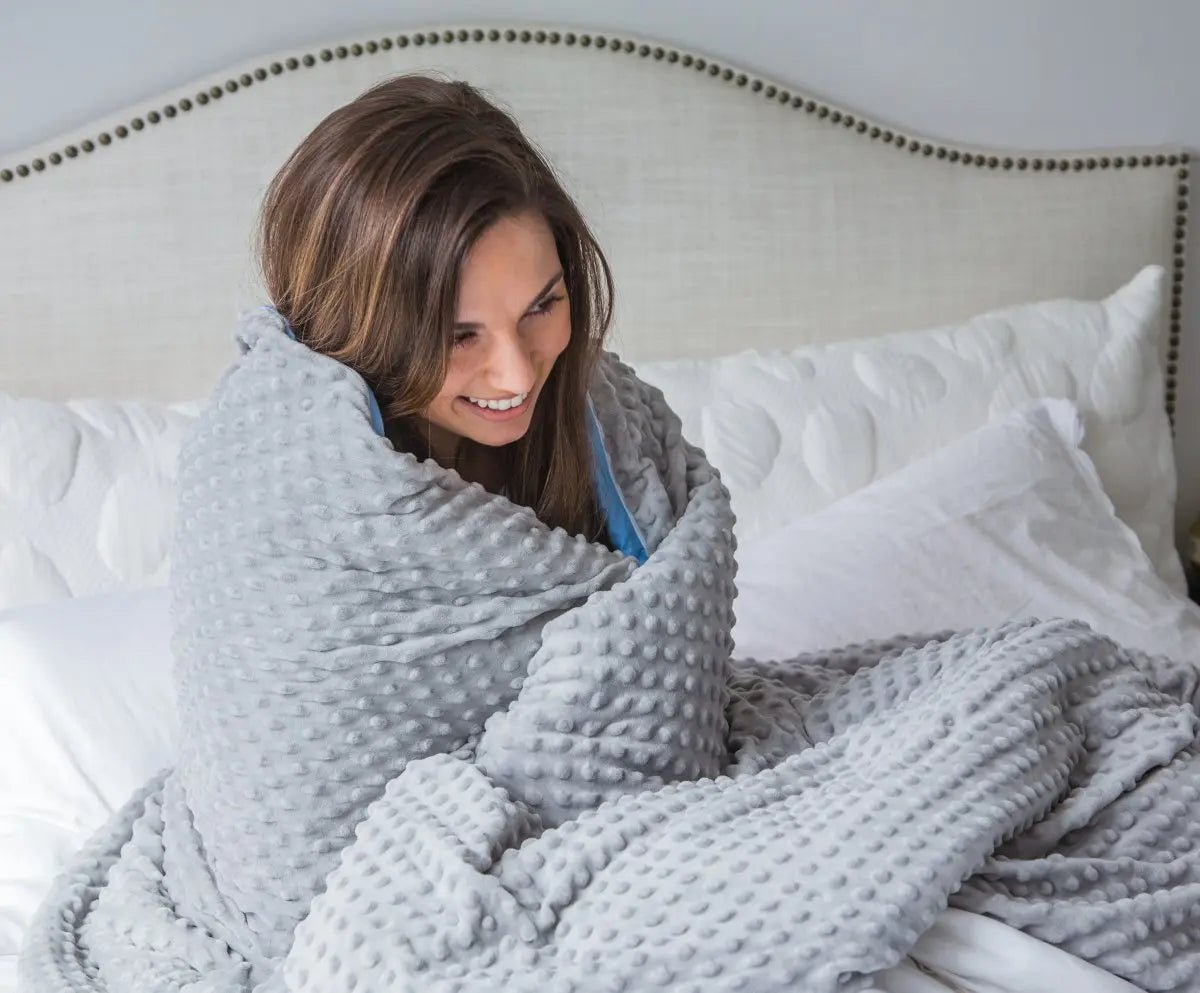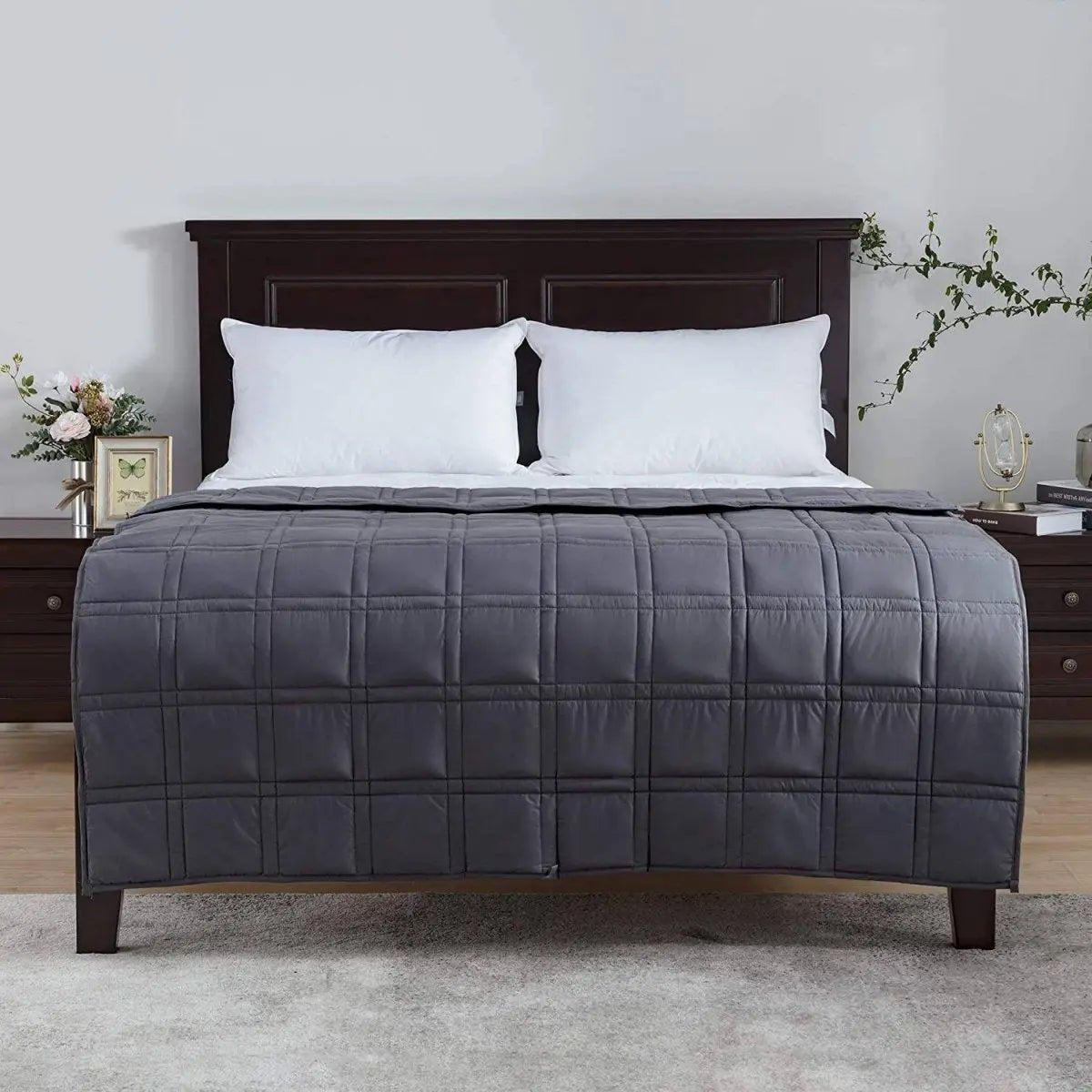Discover The Benefits Of Weighted Blankets For Kids
Understanding The Importance Of Quality Sleep For Kids: A Guide To Pediatric Sleep Solutions
Quality sleep is crucial for the overall well-being and development of children. As parents, it is essential to recognize the significance of ensuring that our kids get enough restful sleep. In this guide, we will explore various pediatric sleep solutions and understand why quality sleep is so important. Sleep plays a vital role in a child's physical growth, cognitive development, and emotional well-being.
Adequate sleep promotes healthy brain function, memory consolidation, and concentration abilities. It also helps regulate mood and emotions, reducing the risk of behavioral problems. One key aspect of pediatric sleep solutions involves establishing a consistent bedtime routine. Having a predictable routine can help signal to your child that it's time to wind down and prepare for sleep. This may include activities such as reading a bedtime story or taking a warm bath.
Creating an optimal sleep environment is another crucial factor in promoting quality rest for children. Ensure that their bedroom is quiet, dark, and at a comfortable temperature. Consider using blackout curtains or white noise machines if necessary. Choosing the right bedding can significantly impact your child's sleep quality. Weighted blankets have gained popularity due to their ability to provide deep pressure stimulation which promotes relaxation and calmness.
These blankets have been found effective in reducing anxiety and improving sleep quality in children with sensory processing disorders or ADHD. In addition to external factors, it's important to establish healthy habits around technology use before bed.
The Rising Concern Of Insomnia In Children: How Weighted Blankets Can Help
Insomnia, once considered a condition that primarily affected adults, is now becoming a growing concern among children. Recent studies have shown that approximately 25% of children experience some form of sleep disturbance, with insomnia being the most common issue. This alarming trend has raised concerns among parents and healthcare professionals alike, prompting the search for effective solutions to improve sleep quality in children.

One promising solution gaining traction is the use of weighted blankets. Originally used as a therapeutic tool for individuals with sensory processing disorders and anxiety, these blankets are now being recognized for their potential benefits in promoting better sleep patterns in children. Weighted blankets work by applying gentle pressure evenly across the body, creating a sensation similar to a comforting hug or swaddle.
This deep touch pressure stimulates the release of serotonin and dopamine, neurotransmitters that play crucial roles in regulating mood and promoting relaxation. As a result, children who struggle with falling asleep or staying asleep may find comfort and calmness under the gentle weight of these blankets. Moreover, weighted blankets can help alleviate symptoms associated with conditions such as Attention Deficit Hyperactivity Disorder (ADHD) and Autism Spectrum Disorder (ASD), which are often accompanied by sleep disturbances.
The soothing effect of the blanket's weight helps reduce restlessness and anxiety, enabling children to unwind more easily before bedtime.
Exploring The Benefits Of Weighted Blankets For Special Needs Children: Enhancing Comfort And Calmness
Weighted blankets have gained significant attention in recent years as a therapeutic tool to improve sleep and promote relaxation, particularly among children with special needs. These specially designed blankets are filled with small weighted materials which distribute gentle pressure evenly across the body when used. While weighted blankets offer benefits for all children, they can be particularly beneficial for those with special needs.
One primary advantage of weighted blankets for special needs children is enhanced comfort. Many children with conditions such as autism spectrum disorder (ASD), attention deficit hyperactivity disorder (ADHD), sensory processing disorder (SPD), or anxiety often struggle with sensory sensitivities or difficulties in self-regulation. The deep pressure provided by a weighted blanket can help alleviate these challenges by providing a calming and soothing effect on the nervous system.
This enhanced comfort helps promote relaxation and a sense of security, allowing children to feel more at ease during bedtime or other moments when they may feel overwhelmed. Moreover, weighted blankets have been found to have a positive impact on sleep quality among special needs children. Sleep disturbances are common among individuals with ASD, ADHD, and other developmental disorders. The gentle pressure exerted by the blanket has shown to increase serotonin production while reducing cortisol levels—a hormone associated with stress—leading to improved sleep patterns.
How Weighted Blankets Improve Sleep Patterns In Kids: Insights From Experts
Sleep is essential for the overall well-being and development of children. However, many kids struggle with sleep-related issues, such as difficulty falling asleep or staying asleep throughout the night. Weighted blankets have gained popularity as a therapeutic tool to improve sleep patterns in kids, providing a sense of comfort and calmness that promotes better rest. According to experts in child psychology and occupational therapy, weighted blankets can help regulate the nervous system by applying deep pressure stimulation.

This gentle pressure has a soothing effect on children, similar to a comforting hug or swaddling sensation. The added weight stimulates the release of serotonin, a neurotransmitter that promotes relaxation and improves mood. By using weighted blankets, children with sensory processing disorders or anxiety can experience reduced levels of stress and anxiety at bedtime. The deep pressure provided by these blankets helps them feel grounded and secure, allowing their bodies to relax more easily.
Consequently, their sleep quality improves as they are less likely to experience restlessness or wake up frequently during the night. Additionally, weighted blankets can enhance proprioception – the body's awareness of its position in space – which is crucial for maintaining a stable sleep environment. When kids move during sleep, they may unknowingly disturb their own rest due to disrupted proprioceptive feedback.
The weight distributed evenly across their bodies helps promote stability during sleep and reduces involuntary movements that could disrupt their rest.
Choosing The Right Weighted Blanket For Your Child: Factors To Consider
When it comes to selecting a weighted blanket for your child, several factors should be taken into consideration. The right choice can make a significant difference in improving their sleep quality and overall calmness. Here are some essential factors to keep in mind while choosing a weighted blanket for your child.
- Weight: The weight of the blanket is crucial as it provides the deep touch pressure stimulation that promotes relaxation and reduces anxiety. It is generally recommended that the blanket's weight should be around 10% of your child's body weight. However, consult with their pediatrician or occupational therapist for personalized recommendations.
- Size: Ensure that you choose an appropriate size that fits your child comfortably. A weighted blanket that is too small may not provide adequate coverage and therapeutic benefits, while one that is too large might be overwhelming or cause discomfort.
- Material: Select a weighted blanket made from breathable and hypoallergenic materials such as cotton or bamboo fabric. These materials allow air circulation, preventing excessive heat retention and ensuring comfort throughout the night.
- Maintenance: Consider the ease of maintaining the weighted blanket. Look for options that are machine washable and dryer-safe, as this will make it convenient to keep the blanket clean and fresh.
- Safety Features: Prioritize safety by choosing a weighted blanket designed with secure stitching and evenly distributed weights to prevent any shifting or bunching up during use.
Boosting Relaxation And Reducing Anxiety With Weighted Blankets: Effective Techniques For Parents
Weighted blankets have gained popularity in recent years due to their ability to promote relaxation and reduce anxiety in both children and adults. These unique blankets provide deep touch pressure stimulation, which has been proven to have a calming effect on the nervous system.

When introducing the weighted blanket into your child's sleep routine, start by incorporating it gradually. Begin by placing it over their legs or feet during relaxation activities such as reading or watching TV before bed. This gradual introduction allows them to become accustomed to the sensation and experience its benefits without feeling overwhelmed. Using the weighted blanket as part of a calming bedtime routine can also be highly effective in reducing anxiety. Incorporate activities such as dimming lights, playing soft music or white noise, and engaging in relaxing activities like gentle stretching or deep breathing exercises.
Combining these techniques with the comforting pressure of the weighted blanket creates an environment conducive to relaxation and sleep. Additionally, encourage your child to communicate their preferences regarding their weighted blanket usage.
Addressing Common Concerns About Using Weighted Blankets For Kids: Safety And Usage Guidelines
Weighted blankets have gained popularity in recent years for their ability to promote improved sleep and calmness in children. However, as with any new product, parents may have concerns regarding the safety and appropriate usage of weighted blankets for their kids. In this section, we will address these common concerns and provide guidelines to ensure a safe and beneficial experience. Firstly, safety is paramount when it comes to using weighted blankets for kids.
It is crucial to choose an appropriately sized blanket that matches the child's weight. The general rule of thumb is to select a blanket that weighs around 10% of the child's body weight. This ensures that the pressure applied by the blanket is not excessive or uncomfortable.
Furthermore, parents should always supervise their children while using a weighted blanket, especially if they are under three years old or have any physical or developmental disabilities.
If a child experiences discomfort or difficulty breathing while under the blanket, it should be removed immediately. It is important to note that weighted blankets are not recommended for infants or very young children who cannot move the blanket off themselves independently.
Additionally, parents should consult with their pediatrician before introducing a weighted blanket if their child has any underlying medical conditions or sensory processing disorders.
To prevent overheating during sleep, it is advisable to choose a breathable fabric such as cotton or bamboo for the blanket's cover.












Leave a comment